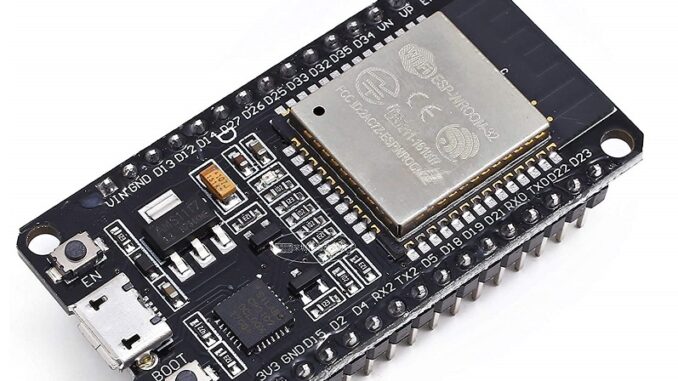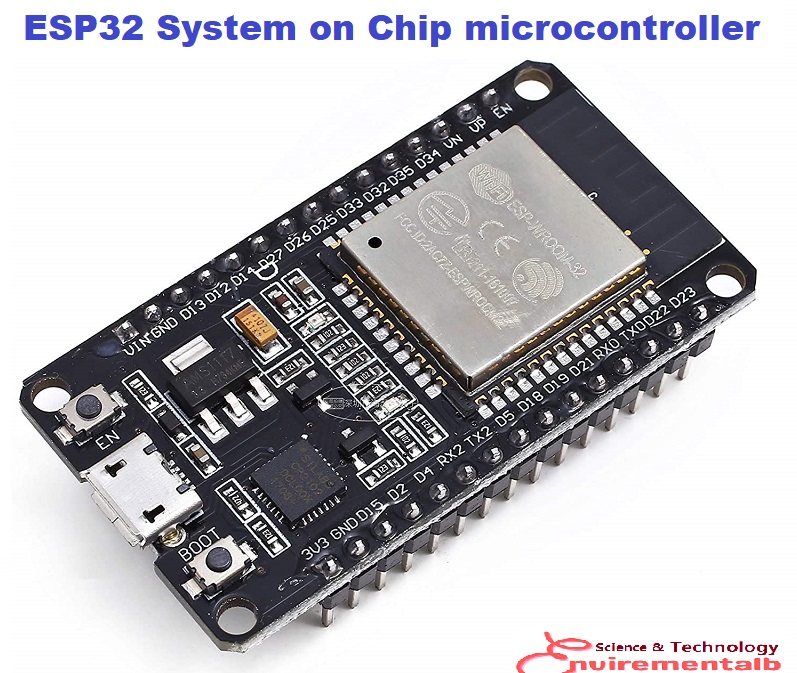
This article is about the introduction to ESP32 Arduino and its full hardware detail. ESP32 is a series of low-cost and low-power System on Chip (SoC) microcontrollers that has great massive popularity nowadays in the field of digital projects. It is developed by Espressif and includes Bluetooth and Wi-Fi modules and a dual-core processor. The popularity of the ESP32 microcontroller grew because of the growth of IoT, but the introduction of the ESP32 is debatable.
The ESP8266 was updated and became the ESP32. The ESP8266’s capabilities were very few because it had very few English documents. Documentation was translated into English, and many projects soon became aware of the power of the ESP8266.
The ESP32 was designed in various ways to improve its capabilities. It offers both Bluetooth and Wi-Fi, whereas the ESP8266 only has Wi-Fi. It is available in a dual-core design, so it is faster than the ESP8266. Power consumption is the ultra-low-power mode, ideal for battery-powered applications.
Features of ESP32 Microcontroller
- It has up to 18 12-bit analog-to-digital converters.
- Two 8-bit digital-to-analog converters.
- 10 capacitive touch switch sensors.
- Four SPI channels.
- Two I2C interfaces.
- Two I2S interfaces (for digital audio).
- Three UARTs for communications.
- Up to 8 channels of IR remote control.
- Up to 16 channels of LED PWM (pulse width modulation).
- An integrated Hall-effect sensor.
- An ultra-low-power analog preamp.
- An internal low-dropout regulator.
ESP32 Specifications
If you want to get all specifications in detail, then please check the datasheet of ESP32 SoC.
- Connectivity WiFi: 150.0 Mbps data rate
- Bluetooth: BLE and Bluetooth Classic
- Processor: Dual-Core 32-bit LX6 microprocessor, running at 160/240 MHz.
- Memory:
- ROM: 448KB for booting & core functions
- SRAM: 520KB for data and instruction processing
- RTC fas SRAM: 8 KB for data storage
- RTC slow SRAM: 8 KB for co-processor accessing
- eFuse: 1 Kbit, and the remaining 768 bits are reserved for customer applications.
- Embedded flash: flash connected internally via IO16, IO17, and SD_CMD.
- 2 MiB (ESP32-D2WD chip)
- 4 MiB (ESP32-PICO-D4 SiP module)
- Low power consumption ensures that you can still use ADC conversions, for example, during deep sleep.
- Dimensions – 75 x 54 mm
Difference between the ESP8266 and ESP32
Technical specifications differences between the ESP8266 and ESP32 are given below.
| CHARACTERISTICS | ESP8266 | ESP32 |
|---|---|---|
| Microprocessor | Xtensa Single-core 32-bit L106 processor | Xtensa Dual-Core 32-bit LX6 con 600 DMIPS Processor |
| Wi-Fi (802.11 b/g/n) | HT20 | HT40 |
| Bluetooth | Does not have | Bluetooth 4.2 y BLE |
| Operating frequency (typical value) | 80 MHz | 160 MHz |
| SHAME | Not Available | 448 KB |
| Flash | Not Available | 520 KB |
| GPIO | 17 | 34 |
| PWM (hardware) | NA | NA |
| PWM (software) | 8 channels | 16 channels |
| SPI | 2 | 4 |
| I2C | 1 | 2 |
| I2S | 2 | 2 |
| UART | 2 | 2 |
| ADC | 10-bit resolution | 12-bit resolution |
| CAN | No | Yes |
| Interface MAC Ethernet | No | Yes |
| Touch sensor | No | Yes |
| Temperature sensor | No | Yes (only the old versions) |
| Hall effect sensor | No | Yes |
| Work temperature | -40ºC to 125ºC | -40ºC to 125ºC |
ESP32 Architectural Block diagram
The block diagram of the ESP32 microcontroller is given below.
Wireless Connectivity:
The ESP32 System on Chip chip has WiFi connectivity that is compatible with 802.11 b/g/n in the 2.4 GHz band with speeds of up to 150 Mbits/s. It includes Bluetooth communication compatibility.


